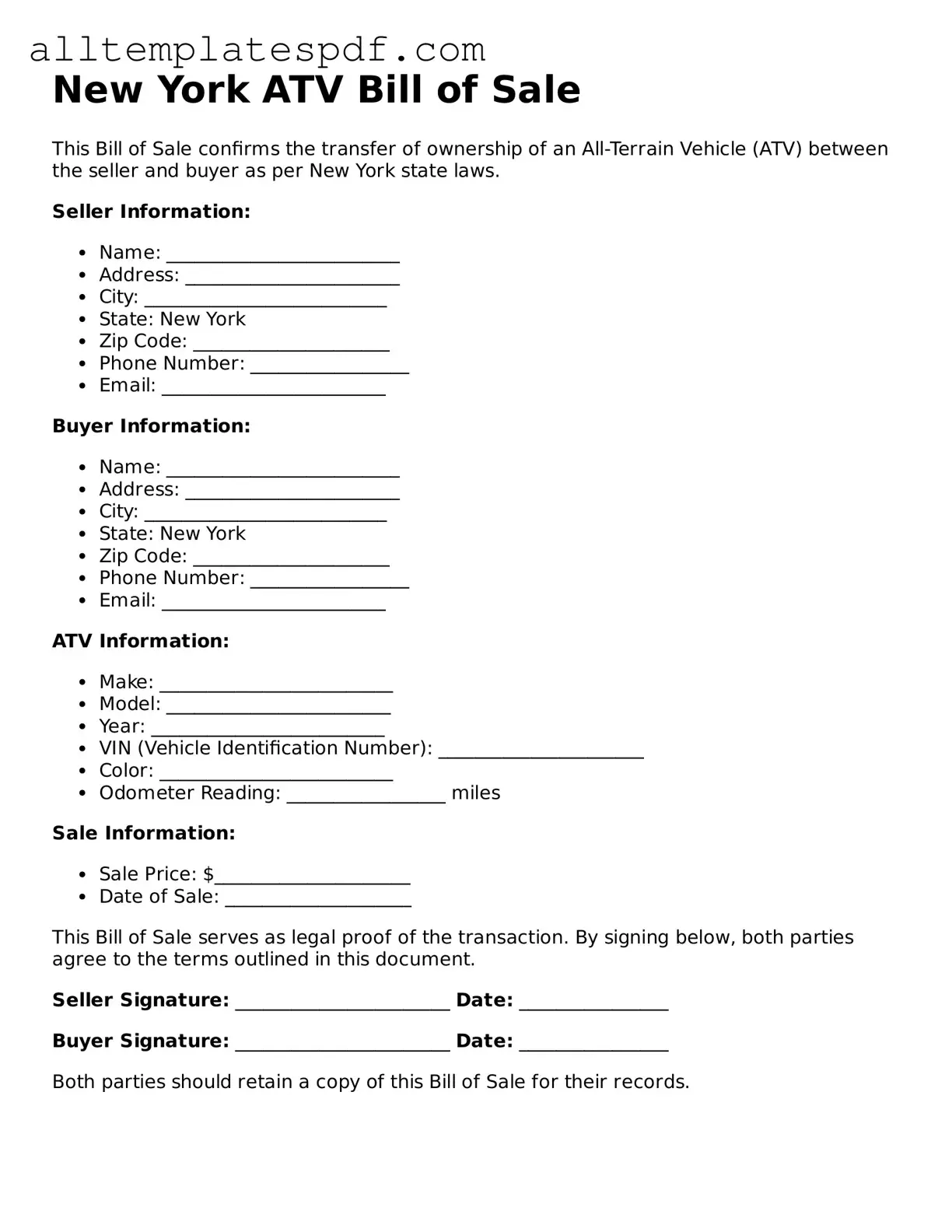Blank ATV Bill of Sale Template for the State of New York
The New York ATV Bill of Sale form is a legal document that records the transfer of ownership of an all-terrain vehicle (ATV) from one party to another. This form includes essential details such as the names of the buyer and seller, vehicle identification number, and purchase price. Completing this document is crucial for ensuring a smooth transaction and establishing proof of ownership.
To fill out the form, click the button below.
Open Editor
